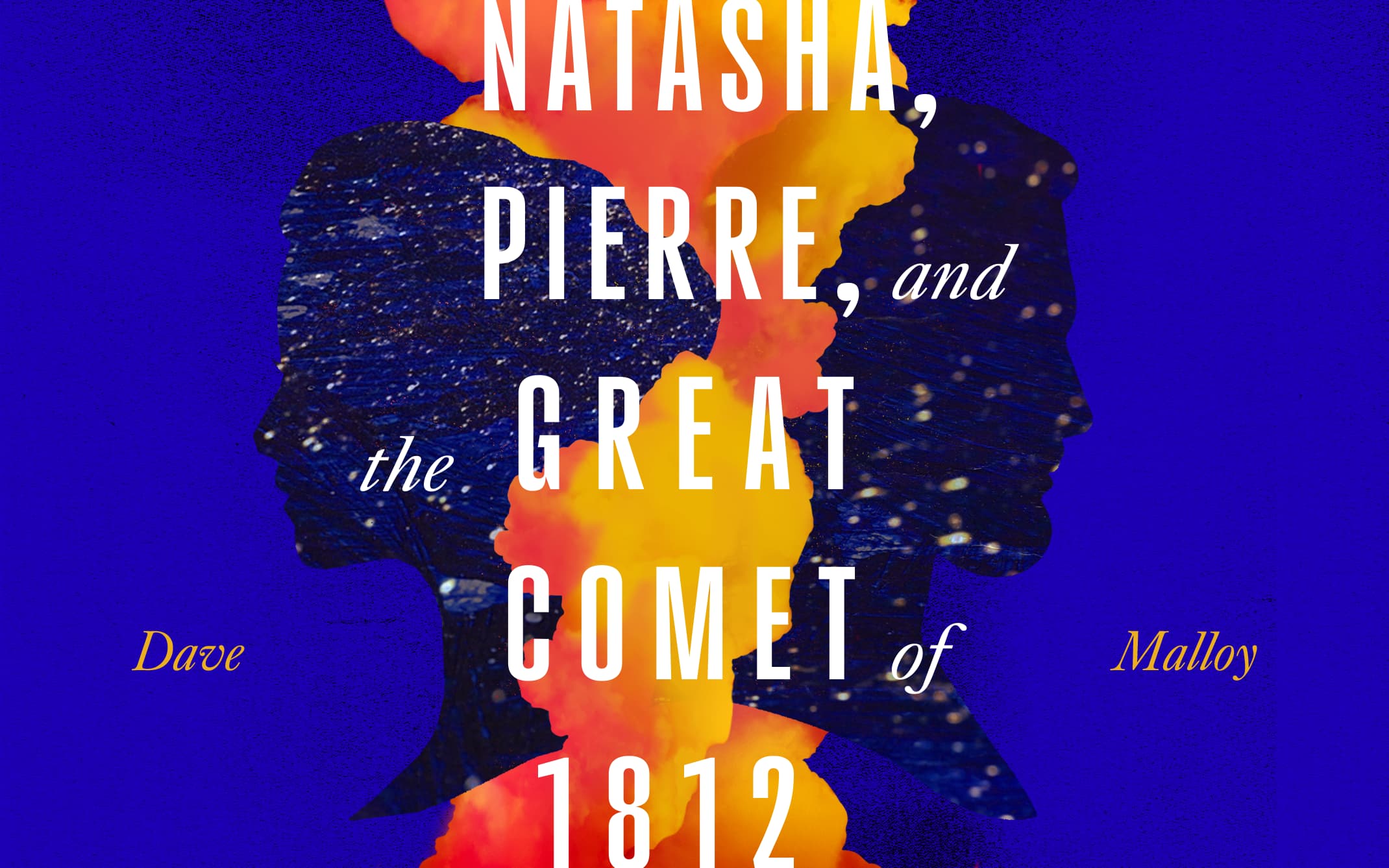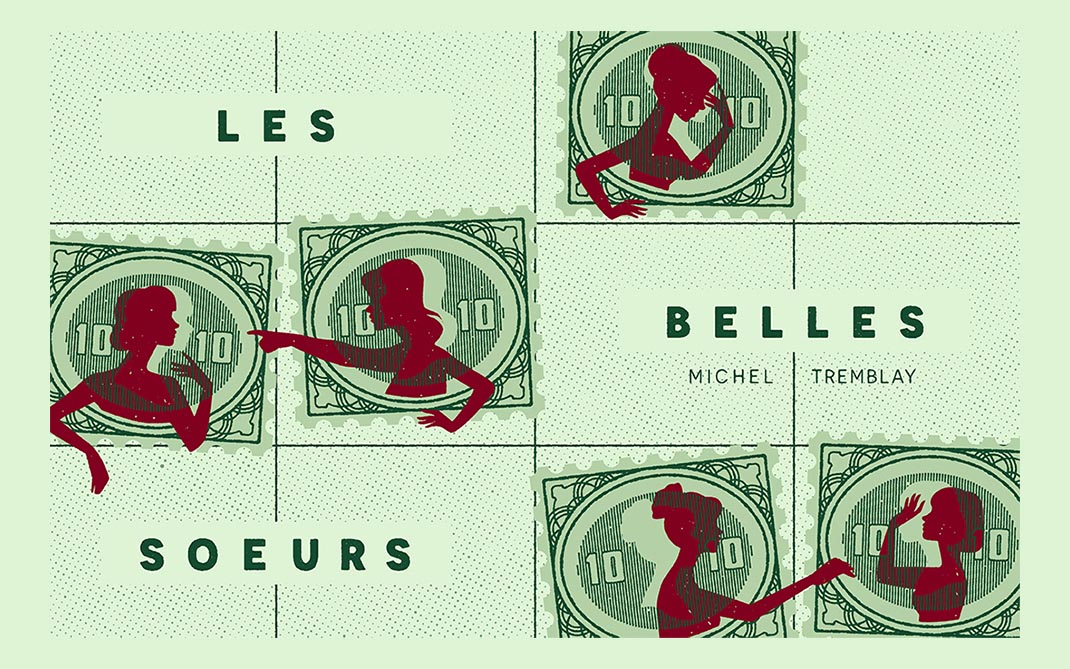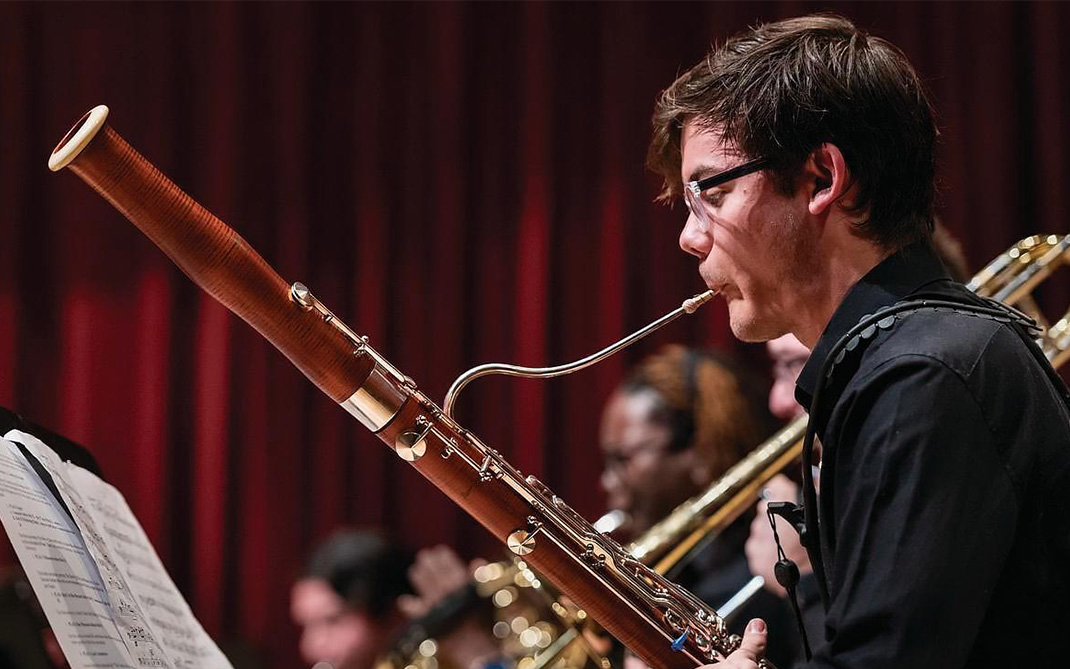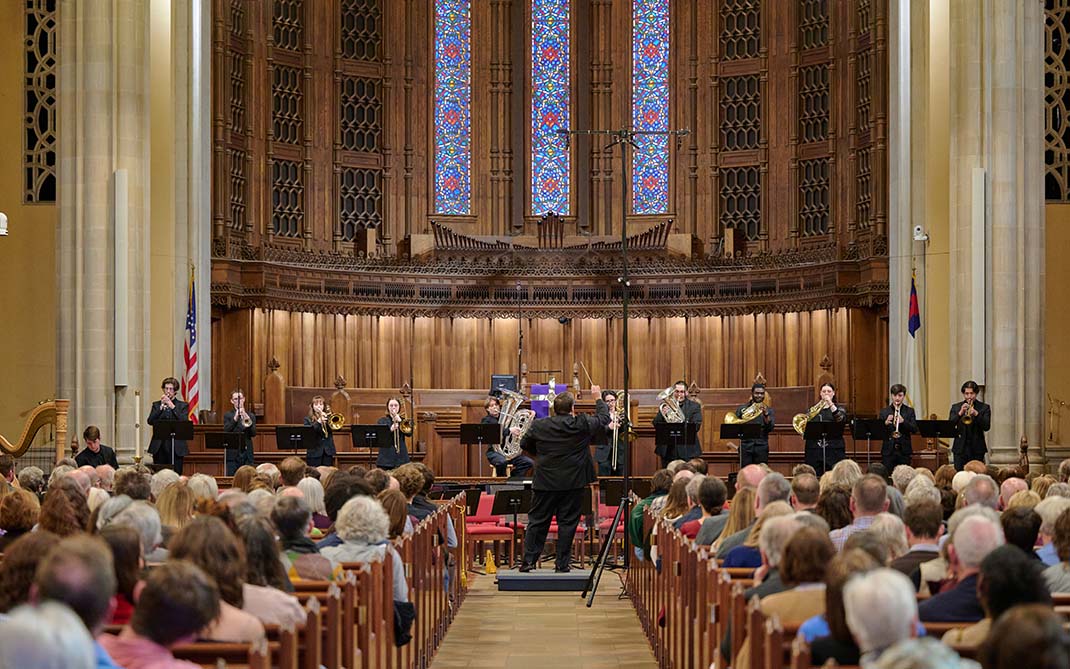Katy Pyle
The views and opinions expressed by speakers and presenters in connection with Art Restart are their own, and not an endorsement by the Thomas S. Kenan Institute for the Arts and the UNC School of the Arts. This interview has been edited for length and clarity.
As a young student, Katy Pyle almost quit ballet altogether after years of hearing from ballet teachers and schools that they were not the right size or shape for ballet. A move to New York, though, opened new avenues for them to dance with and choreograph for numerous well-regarded contemporary-dance ensembles.
In 2011, however, Katy, who identifies as a genderqueer lesbian, recommitted to their original passion. They created Ballez, a Brooklyn-based company that welcomes the talents and stories of queer ballet dancers, who historically have always been part of ballet but to this day do not get acknowledged, much less celebrated. Katy and Ballez aim to celebrate the queerness and joy inherent in ballet by doing away with the rigid, cis-hetero structures and methods that once almost killed their passion for the form.
Among the ballets that Katy has developed for the company are queer re-imaginings of two canonical works, “The Firebird” and “Sleeping Beauty,” which they retitled “Sleeping Beauty & the Beast” and that explored two crucial events a century apart in the herstory of New York’s Lower East Side: the striking garment workers of 1893 and the AIDS activist dykes of 1993.
In this interview with Rob Kramer and Pier Carlo Talenti, Katy explains how the pandemic deepened their passion for ballet and for bringing the form to many communities in inventive ways. They also look forward to a day, which may already be here, when new audiences expect and demand the normalization of inclusive traditions in ballet and all the arts.
Choose a question below to begin exploring the interview:
- Before we dive into the past year, I’d love to hear from you about any projects that you’re eager to leap into once indoor rehearsing and public performances come back.
- Clearly the events of 2020 have affected the depth with which you and your dancers are approaching this work. What unexpected lessons have you learned in these incredible last 12 months?
- So as you’re thinking about the future of your company, what are your hopes for Ballez’s development that will make it different from extant ballet institutions?
- As someone who runs a nonprofit, can you tell us about what you think needs to be fixed about the way things could be improved or changed?
- How do you aspire to run your company differently from traditional, hierarchical companies?
- What would you say to a young person … [who] is feeling what I think you felt, which is, “I am not fitting in, and yet this is my passion and I want to be amazing at it and I want to make this my career for a while”? What advice would you have for this person?
- If you had a magic wand and you could make one change to start impacting these systems now, where would you focus it?
- You’ve talked about disruption. Has the world of capital B Ballet noticed your disruption? If so, what’s been their reaction, and do you care?
Rob Kramer: Before we dive into the past year, I’d love to hear from you about any projects that you’re eager to leap into once indoor rehearsing and public performances come back.
Katy Pyle: I am actually working on a show right now. I’ve been working on it through this entire chaotic year in various ways. We rehearsed outside; we’ve rehearsed on Zoom; we’ve used video. Yeah, life continues in this very weird, new form. But it is ongoing. The project is called “Giselle of Loneliness.”
I find it has been very ironic this year how much that title has come to encompass. It was something that I started researching and planning for in 2017, and I titled it in 2017. I didn’t know that this year would be such a good fit for the subject matter, which is really difficult, really dark. It’s very much a reflection on the Romantic Era ballet “Giselle,” which is about betrayal and was created in the Romantic Era when the society where it was created in Western Europe was dealing with tuberculosis. Giselle is living inside of her little, tiny house; she’s not supposed to go out of her house; she’s not supposed to dance at all because her heart is not strong enough. So it’s weirdly connected to this year.
Another part of the inspiration for this show is this Radclyffe Hall novel that was written in the ’20s called “The Well of Loneliness,” which is about an experience of a queer, gender-nonconforming person in relationship to society and a prolonged feeling of un-belonging and loneliness, which obviously also resonates this year. The show is all solos. That was also determined before this year happened. It was supposed to premiere in June 2020 at the Joyce, but now it’s been postponed and we are looking at a livestream premiere in June 2021, which is the year we’re in, although I keep forgetting that [laughing] because it’s so strange. But that work has been ongoing and will continue onwards.
Pier Carlo Talenti: So the fact that it’s all solos has, I guess, made it easier to rehearse during the pandemic because it was just you and one other dancer in the room?
Katy: Absolutely. We started out rehearsing on video. I would have the dancers send me clips and videos from their homes or from outdoors. I’ve been getting really into basketball courts and handball courts in the city. We all have one within walking distance of our homes. So dancers were sending me videos of themselves performing the solo with the music outdoors in all these various conditions, with kids jumping rope and basketball players and whatever else chaos is going on. But that was kind of cool and weird. Then we were able to do rehearsals outside with a bigger group in the fall because we were able to stay away from each other and be in the open air.
Then I went into the studio with one dancer at a time just this past month, actually. In the month of February I was at Gibney Dance, completing a residency that originally started on March 13th, 2020 and was canceled. So we finally got to go in and complete this work, which has just deepened in the most incredible, striking ways for each of the performers.
Rob: Can you say more about that?
Katy: I think the themes that are coming up in the solos are around each dancer’s relationship to ballet and ways that they did or didn’t belong, the suffering that they experienced in relationship to that not belonging and betrayal that they experienced in relationship to the form betraying them by not allowing them to be who they are. And by “who they are,” I mean all the dancers I work with are people that don’t fit into traditional binary gender expectations within ballet, and they are all queer-identified people. So there is something inherently at odds with the heteronormative, cis-gendered form of ballet and these dancers.
... Because everyone’s been in isolation this year and sitting with themselves, sitting with their own struggles in ballet and in the world at large and being with suffering throughout this entire year, I feel like people have just deepened how they express that and what they’re allowed to express.
So when we get into working on the material, because everyone’s been in isolation this year and sitting with themselves, sitting with their own struggles in ballet and in the world at large and being with suffering throughout this entire year, I feel like people have just deepened how they express that and what they’re allowed to express. It gets kind of weird. It’s kind of hard to talk about, because it is actually so physical and so emotional. I just feel like every single person that’s performing in this work — they’re all in their 20s, so this is something, I think, that’s also just been a big shift for this younger generation — the maturity that they have now and the ability and the willingness they bring to this very emotional material that is about their past trauma is really heightened now. I feel like these particular people have worked through a lot of their own history, their own feelings, and come to a place where they’re able to bring that vulnerability into their performance and allow it to be seen.
Pier Carlo: Clearly the events of 2020 have affected the depth with which you and your dancers are approaching this work. What else did the past year show you about your world, the world of dance, the role of dance in communities? What unexpected lessons have you learned in these incredible last 12 months?
Katy: I think for me personally there’s been a mental shift in terms of why I’m making what I’m making and who I’m making it for, because I’ve seen these things disappear that I was vying for or depending on or hoping to gain access to. I guess I’ve just noticed that they’re really not that supportive after all and they don’t actually have the key to creativity or creation, period. That’s actually something that I have access to and that I have access to through my own self and through my connections to my community and the artists that I am blessed to work with and connect to.
[Ballet] is a form and it is a transient expression that is practiced by people, and the people that practice it and continue to reckon with it and play with it and express through it are the people that create what it is.
I think there’s a way that ballet specifically has been this institution itself that treats dancers as property and treats makers as property, and you have to be able to get an “in” to it and belong inside of it in order to benefit from the system. But as things crumble and fall away, I connect more and more to this truth that I own ballet. Every person that practices ballet owns ballet, and it’s not something that anyone can actually own. It is a form and it is a transient expression that is practiced by people, and the people that practice it and continue to reckon with it and play with it and express through it are the people that create what it is.
So I think these illusions of who has power and why have shifted, although [they laugh] there are still people that have had access to studios throughout this whole pandemic and it does make me crazy. But the fact that I can teach a ballet class on the basketball court in the center of Crown Heights to my neighbors and my friends and my incredible, beautiful dancing colleagues and that a bunch of three- and four-year-olds that are playing on the playground will see ballet for the first time right where they live is epic to me. It is really meaningful because it just decentralizes all of these ideas about who has access to art and why and how.
Ballet especially is so capitalistic and it’s so centered in cis-hetero patriarchal values, which are about a certain type of beauty, a certain type of gender, a certain type of body. But to remove it from those things — none of that stuff really matters right now because there’s no shows to go to, there’s no tickets to sell — does feel like this kind of radical destabilization.
Pier Carlo: One of the interesting things about you, of course, is that you’re not only a dancer and choreographer but you also created your own company. You are now an institutional leader yourself, right?
Katy: Yeah.
Pier Carlo: So as you’re thinking about the future of your company, what are your hopes for Ballez’s development that will make it different from extant ballet institutions?
Katy: I really hope that Ballez can continue to grow and expand in its connections to people. That’s all I’ve wanted from the beginning of Ballez, and I continue to want that. I’m hoping that we can continue to think creatively about how those connections can be made, whether it’s being able to organize more travel touring for us where we perform on basketball courts in other cities, or in theaters. It’s really open for me. I feel like I want to remain flexible in how those things manifest, but I do want to continue to bring the actual work of the performances and the classes to broader communities.
It just honestly breaks my heart to think about young dancers that are training in ballet being told that who they are is wrong. I want to continue to be able to expand how I can reach those people to just send a different message and to encourage them to be exactly who they are and to dance from that place.
Truly I don’t know what it’s going to look like for us to keep going. I just don’t know. I can’t see the future, but I feel like staying connected to individuals and relationships and actual communities of caring is the only way forward. I guess in some ways I feel less interested in trying to impress grant committees or panels or being on that inside track of anything, because if people don’t want to connect to what I’m doing, I don’t have time to waste trying to lure them in, because there’s all these other people.
Pier Carlo: As someone who runs a nonprofit, can you tell us about what you think needs to be fixed about the way — putting aside unemployment and governmental support and just looking now at granting institutions — things could be improved or changed?
Katy: I don’t know. I don’t know enough about it. The one thing I can really speak to is that a lot of the grant makers that I typically apply to in a given year this year decided to give out a lot more grants. I just got way more money, weirdly, this year from grants than I do in a normal year where I’m competing against other people. I feel like a lot of the grant-making organizations were just like, “Whoa, we need to help people. People can’t pay their rent.” The thing is, I couldn’t pay my rent in 2019 either! This is not new.
I feel like I saw that there’s more money available that hasn’t been going directly to artists. They’ve made us jump through so many hoops, coddle and schmooze and do all of this posturing in order to gain access to funding in the past. That’s what it feels like to me. Because you know who’s going to be on the panel for a certain grant and when you see that person, if you don’t act a certain way or seduce them in a certain way — and I don’t mean just sexually; I mean just being cute or being charming or whatever it is —
Pier Carlo: Standing out. Competing.
Katy: Yeah.
Rob: Well, this is where diversity issues come into play big-time.
Katy: Right. Absolutely.
Rob: Depending on what they like or don’t like and the people they see and their beliefs or their values.
Katy: Yes. And I think there’s a real mentality amongst the people that are making those cultural decisions about ... . And I know they talk to each other, and they’re like, “Ooh, we decided this artist is good, so we’re all going to give this person this money, and we’re going to make their career happen,” and just not really wake up to all the other people that are being presented that have really worked very hard to produce materials for whatever application they’re doing.
Rob: How do you aspire to run your company differently from traditional, hierarchal companies?
Katy: Ballez doesn’t have a system of ranking hierarchy the way that a traditional ballet company does. We don’t have a corps de ballet and soloists and principal dancers. Everyone is working on the project. For this particular show everyone has a solo, and they’re the same length. I’m very into equality or a sense of fairness, so I’m working with each of the dancers and really getting in-depth with who they are and what they want to bring and how I can coach them and work with them and talk to them and dance with them to bring out the best performance that we can make together. It’s very much a collaborative effort.
I source different materials for us to work on and put together a structure, but the ways of inhabiting that structure are entirely dependent on the history and the identity and the reality that that person is living in. So we really get deep together and make whatever happens happen together. Who they are really, really, really, really matters to me, which is not the way that traditional ballet companies function.
I remember very much being told over and over again as a young ballet dancer, “You’re replaceable.” And the idea that everyone — especially as a female-assigned person growing up in ballet — should look the same, they should be close to the same height, they should be close to the same weight, they should have the same kind of body type, they should really be replaceable, this whole structure gears towards making that replacement easy. And that’s not what I want to do.
Every person that I work with is an individual. They’re bringing a whole huge world of talents and ideas and ways of dancing to the process. My work is to try to reveal that, to reveal that particular beauty and let that be seen and let it be appreciated and let the weirdness of that person be seen, let the hilarity of that person be seen, everything that’s special about them inside a form that would really rather keep us all the same and keep the whole group away from this idea of standing out. I’m just really trying to turn that on its head.
Every person that I work with is an individual. They’re bringing a whole huge world of talents and ideas and ways of dancing to the process. My work is to try to reveal that, to reveal that particular beauty and let that be seen and let it be appreciated and let the weirdness of that person be seen, let the hilarity of that person be seen, everything that’s special about them inside a form that would really rather keep us all the same and keep the whole group away from this idea of standing out. I’m just really trying to turn that on its head.
Pier Carlo: What would you say to a young person, say a female-identified ballet dancer who is training right now and in some ways is feeling what I think you felt, which is, “I am not fitting in, and yet this is my passion and I want to be amazing at it and I want to make this my career for a while”? What advice would you have for this person?
Katy: I saw a really positive statistic the other day, which is that 50% of Gen-Zers don’t subscribe to gender roles and the binary, so I think it doesn’t even have to come from me. People that are coming up now are going to change this field. It is going to change. It is going to be dead, or it’s going to be reborn with a different set of ideals, because the generation that’s coming now doesn’t want to participate in those old structures and ideas.
So I guess I would just say, hold tight, you got this, you’re the future. You’re going to be able to be who you are. You’re going to be able to dance the way that you want to dance if you’re a female-assigned or ‑identified person, if you’re a male-assigned person who’s female-identified. You have a future if you’re a non-binary person. You have a future. You can get into the uniqueness of who you are and create a space for yourself where you can dance in the ways that you want to dance and present yourself in the ways that you want to present yourself, and there will be an audience for it. Once we have this turnover of who’s in power, which may happen a lot faster than we think —
Pier Carlo: Right. Because right now they’re still being taught by the gatekeepers from an older tradition, so we have to wait for that turnover, as you said.
Katy: Yeah. And because of the instability of this moment, there will be, I think, a lot of turnover. I live in New York City, which has been a very central location for dance throughout the past 100 years. A lot of those institutions and structures are just falling away, which means there will be space for new things and ideas to grow out of that empty space.
Rob: If you had a magic wand and you could make one change to start impacting these systems now, where would you focus it?
Katy: Honestly, the thing that comes up for me right away is support, in terms of financial support. I haven’t said this, but the fact that I’ve been able to receive unemployment during this time has been such a big deal. In the past I think it’s been very, very, very difficult and challenging to be an artist, especially working in dance in the United States, whereas I see my colleagues in Europe having been able to receive unemployment for their whole careers when they’re not working on a show. I think that that support — basic needs being met, being able to buy food, knowing that you can pay rent — makes a really big difference in terms of what work dancers can take and what they can do instead of just having to throw themselves towards these more commercial, more mainstream projects.
Rob: Yeah. When I was an actor I called it doing art for bucks.
Katy: Yeah, absolutely. And I think it affects us on such a psychological and physical and emotional level to go against your inner compass and to just throw yourself toward what you think’s going to be able to be lucrative for you. It doesn’t make good art. It doesn’t make good performers. It’s just something that we’ve had to struggle with.
But I’m a socialist. I am really hopeful that we can move towards actually providing for basic needs for everyone in this country so that people that feel compelled toward being artists will be able to feel like they can pursue that and work on what feels honest and true and good to them instead of having to betray themselves to become something that they see as being viable.
Pier Carlo: You’ve talked about disruption. Has the world of capital B Ballet noticed your disruption? If so, what’s been their reaction, and do you care?
Katy: I think that they notice it.
It’s really funny. I feel like I have such a limited social sphere of interaction now, obviously, because we’re not going to shows, but Isabella Boylston, who’s a quite famous ballerina at ABT, has been just liking my Instagram posts and putting little comments, and I’m like, “Interesting. There are these people inside of this.” I am also connected to Russell Janzen, who’s a principal at New York City Ballet, and we’ve had multiple conversations about thinking beyond these gender binaries.
I think there are so many dancers out there, even in these major institutions, that don’t enjoy being trapped inside their roles that they are trapped inside of. I have seen that more on Instagram this year than I’ve seen it on the stage. I think that we are going to keep moving toward those bigger possibilities, absolutely. Like James Whiteside, who’s also in American Ballet Theater, is someone that has been putting out a lot of content, a lot of personal expression that very much defies traditional gender binaries, and I think he has a big influence. I think all of these people will actually shape the future in the next generations and what’s to come.
Pier Carlo: Right. That makes me think also of Harper Watters at Houston Ballet, who posts videos that really throw heteronormativity on its head. He has a huge following, and it makes me think these dancers are creating the audience who will expect something very different in the future.
Katy: Absolutely. And there are so many people following Harper Watters. They will be so disappointed if they go to Houston Ballet and they just see that person forced to be a romantic cavalier without heels on! That’s not what people actually want.
We’re moving toward more expansive ideas of who we all are as individuals, and we want to see that reflected, I think, onstage. I think the kind of maintenance of this binary and this strictness of that really comes from a place of fear, of wanting to hold onto something and be like, “This is the tradition. We can’t change it, because then no one will come, or we won’t have the things that we’ve had.”
Those moments of transgression are what creates excitement and newness and passion around actually going to see things. Who’s going to go to the theater unless it’s something that actually feels exciting and compelling and new?
First of all, ballet has changed so much from when it started. There was a moment in Italy in the 1800s when only female dancers were allowed to perform and they performed male role, because they decided that male dancers were ungainly and they didn’t like it. So there were women performing in drag in Italy in the 1800s. Nijinsky obviously had a huge impact on the form. People freaked out, but they loved it. And people still talk about it because it was exciting. Those moments of transgression are what creates excitement and newness and passion around actually going to see things. Who’s going to go to the theater unless it’s something that actually feels exciting and compelling and new?
March 22, 2021






